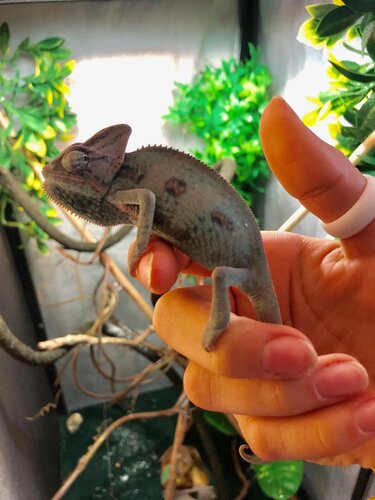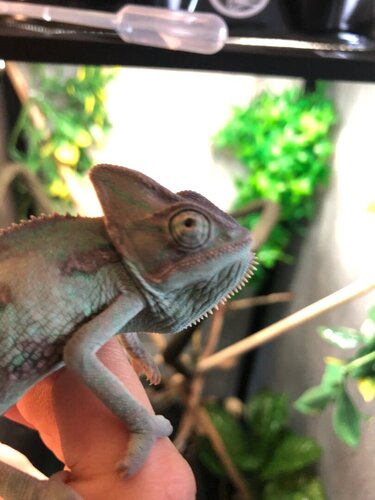Emmamendichameleon
Member
please help! I'm a new chameleon owner, i've only had my cham ( i don't think he's fully adult yet) for a week and he has proper caging, plants with water sprayed on them, heating, lighting, and everything. His cage gets sprayed with water 8 times a day (30 second misting every 3 hours) and I've fed him a few worms and crickets. But he won't drink water. His eyes are starting to look a little sunken in and his skin is looking very dry and i don't know what to do to help him. I've dripped water in front of him for a couple of minutes. no results. And sadly, I've even tried using a pipette to force him to drink water because it's the only way i can get him to drink at least a little but he fusses and hisses at me and tries running away. I hate having to see him be stressed by this but it also hurts to see him refuse water. i don't know why he's doing this, but I'm assuming its stress. i don't take him out of his cage very often and he's located in a quiet separated room. Should i get a dripper? should i try showering? help!!!






